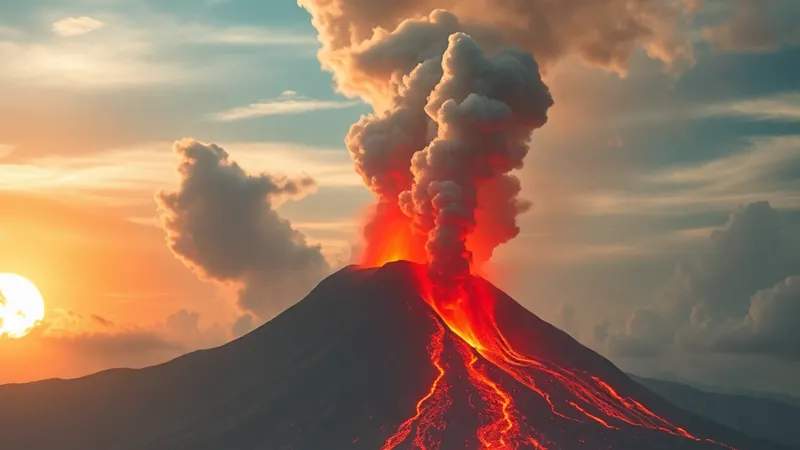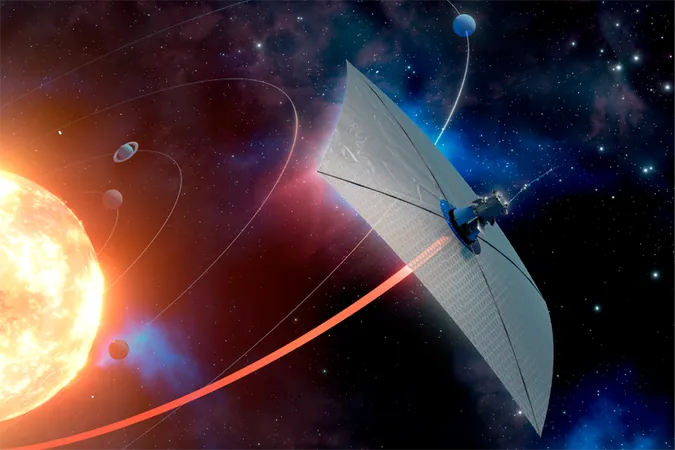
Unveiling the 1831 Climate-Chilling Eruption: The Mystery Volcano Identified!
2025-01-04
Author: Noah
Identifying the Enigmatic Eruption
In a groundbreaking discovery, scientists have finally identified the enigmatic volcano responsible for a significant drop in Earth's climate nearly 200 years ago! The volcanic eruption, which took place in 1831, has long puzzled researchers, but new findings have pinpointed Zavaritskii, a remote volcano nestled within the Kuril Islands, a region that lies at the center of a territorial dispute between Russia and Japan.
Impact on Global Temperatures
According to a recent report published in the esteemed journal 'Proceedings of the National Academy of Sciences of the United States of America,' this powerful eruption contributed to a staggering 1°C (1.8°F) reduction in temperatures across the Northern Hemisphere, leading to notably cooler and drier weather patterns.
Unraveling the Mystery
Despite the known year of the eruption, its exact location remained shrouded in mystery for almost two centuries. Researchers were able to crack this historical puzzle by meticulously analyzing ice cores extracted from Greenland. These cores contained well-preserved layers of ash, volcanic glass, and sulfur isotopes that correlate with the catastrophic event of 1831. The scientists noted that the sulfur fallout recorded in Greenland was an astounding 6.5 times greater than that observed in Antarctica, solidifying the eruption's origin in the Northern Hemisphere.
Cutting-Edge Techniques
Employing cutting-edge techniques, including geochemical analysis and computer modeling, the team adeptly traced the volcanic materials back to the northwest Pacific area. Samples from prior studies examining Kuril volcanoes indicated a striking geochemical match to the Zavaritskii caldera, confirming its role as the source.
A Historical Context of Eruptions
This tremendous eruption is now acknowledged as one of the most powerful volcanic events of the 19th century, standing alongside the infamous eruptions of Mount Tambora in Indonesia (1815) and Coseguina in Nicaragua (1835). These colossal eruptions contributed to the climatic shifts that marked the conclusion of the Little Ice Age, a period characterized by notably cooler temperatures that impacted societies and ecosystems around the globe.
Looking Forward
As scientists dive deeper into the climatic effects of the Zavaritskii eruption, we are reminded of the far-reaching impacts volcanic activities can have on our planet’s climate. Stay tuned for further updates as researchers unravel more secrets from our Earth's fiery past!









 Brasil (PT)
Brasil (PT)
 Canada (EN)
Canada (EN)
 Chile (ES)
Chile (ES)
 Česko (CS)
Česko (CS)
 대한민국 (KO)
대한민국 (KO)
 España (ES)
España (ES)
 France (FR)
France (FR)
 Hong Kong (EN)
Hong Kong (EN)
 Italia (IT)
Italia (IT)
 日本 (JA)
日本 (JA)
 Magyarország (HU)
Magyarország (HU)
 Norge (NO)
Norge (NO)
 Polska (PL)
Polska (PL)
 Schweiz (DE)
Schweiz (DE)
 Singapore (EN)
Singapore (EN)
 Sverige (SV)
Sverige (SV)
 Suomi (FI)
Suomi (FI)
 Türkiye (TR)
Türkiye (TR)
 الإمارات العربية المتحدة (AR)
الإمارات العربية المتحدة (AR)